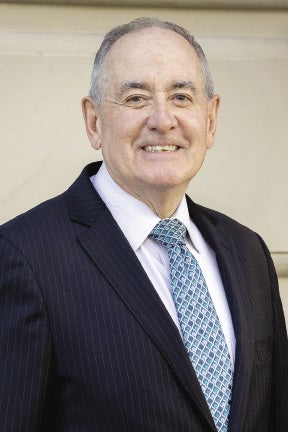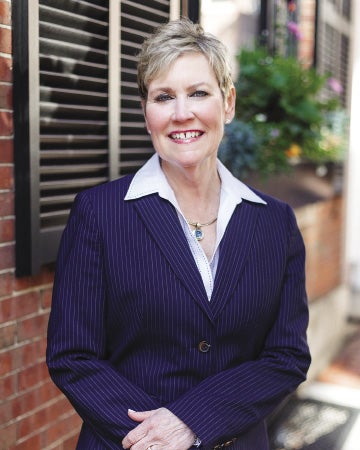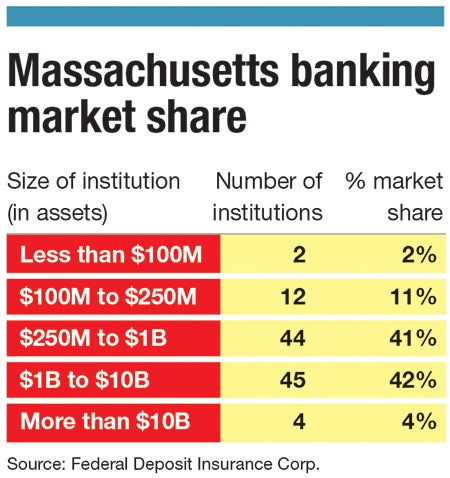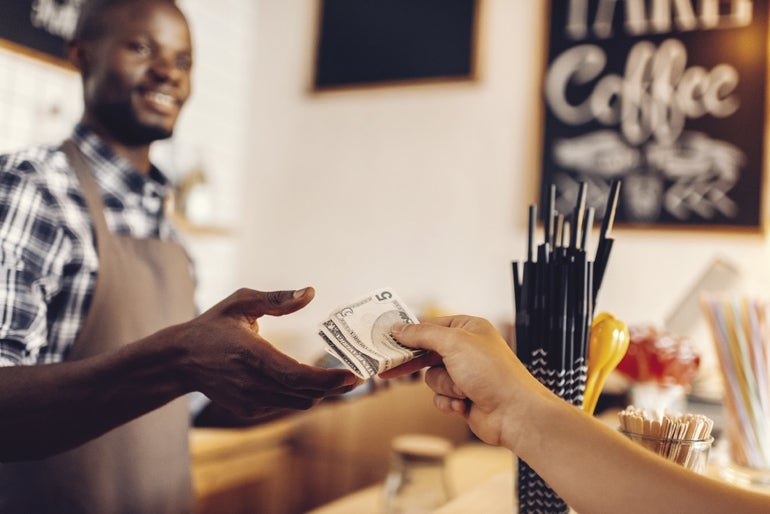With all factors considered, are we headed toward a totally electronic banking industry, where coins and paper money are a thing of the past? It seems the answer would be yes, but Central Massachusetts banking leaders say no.
Get Instant Access to This Article
Subscribe to Worcester Business Journal and get immediate access to all of our subscriber-only content and much more.
- Critical Central Massachusetts business news updated daily.
- Immediate access to all subscriber-only content on our website.
- Bi-weekly print or digital editions of our award-winning publication.
- Special bonus issues like the WBJ Book of Lists.
- Exclusive ticket prize draws for our in-person events.
Click here to purchase a paywall bypass link for this article.
Ask any group at a restaurant needing to split a bill, and they’ll tell you: Banking innovations such as Zelle make so life much easier.
As a society, we love convenience, so it stands to reason we’re wooed by the ability to manage our accounts with banking apps – instantly depositing checks and seeing our balances in real time.

“Venmo is instantly trackable and people don’t have to carry cash,” said Peter Alden, president and CEO of Bay State Bank in Worcester.
Like Zelle, it’s one of the popular person-to-person payment methods. It’s rare to see a person in line ahead of you at the grocery store pull out a $50 bill and have the cashier count out their change anymore.
The COVID factor
Electronic banking was already gaining traction when it grew in popularity during the COVID-19 pandemic, said Kathleen Murphy, president and CEO of the Massachusetts Bankers Association.

She points to statistics from the American Bankers Association showing that before the pandemic, 33% of bank customers in the U.S. used apps to manage their bank accounts, with 24% doing so online, and 21% in person at a bank branch, in person. During the pandemic, digital channel use grew (44% mobile app; 26% online); while branch banking saw a 10-percentage point drop.
Fewer folks visiting branches made sense from a health standpoint in light of COVID, of course, in terms of social distancing. But Cornerstone Bank’s Al Ahmed, senior vice president of retail, said as customers figured out exactly how COVID spread, many people didn’t want to touch actual money itself, either.

“We had more and more customers sign up to use Apple Pay or Google Pay because it was just a more hygienic way of doing business,” Ahmed said.
With all factors considered, are we headed toward a totally electronic banking industry, where coins and paper money are a thing of the past? It seems the answer would be yes, but Central Massachusetts banking leaders say no.

Cash is king (or at least, queen)
Even with more electronic ways to bank, more people doing so, and the pandemic prodding even more (perhaps initially reluctant) banking customers to download apps or hop online, bank leaders foresee paper currency, ATMs, and physical branches to be with us for a decade or more.
Customers who do their banking in cash are referred to as unbanked.
Federal Deposit Insurance Corp. statistics show an estimated 5.4% of U.S. households as unbanked – with no one in the household having a checking or savings account at a bank or credit union – in 2019. In Massachusetts, for the same year, this number was 3.7%.
“The 2019 data up ticked slightly from 2017,” Murphy said. “However, it is a significant decline from 2015, when the percent of unbanked households in Massachusetts totaled 5.7%.”
Alden has seen unbanked customers becoming rarer. Some do it by choice for budgeting reasons, he said. Maybe they are paid in cash, and once their cash is depleted, they know they have used the money they have for the week or for the month. They pay rent or other bills via money order.
“If they use electronic payments, they aren’t as easily able to track what they are spending,” is their theory, he said.
A common reason individuals opt to be unbanked is they think they don’t have enough funds to deposit into an account without accruing fees, Murphy said.
But without an account, consumers lose an opportunity to improve their credit scores if they had bounced checks in the past. Instead, they may shy away from reporting requirements altogether.
“The primary reason we see, though, is a lack of funds,” she said, unaware of no- or-low-fee and minimum balance accounts available.
The unbanked are more likely to incur costs with check-cashing services or payday loans at the same time they are missing out on bank account benefits.
No matter where customers fall in their banking practices, banks remain committed to serve them. Just as Cornerstone and Bay State in Worcester invest in mobile technology, they continue to invest in ATMs.
Both Ahmed and Alden said banks respond to how customers want to do their banking and provide those options, catering to customers. For now, brick and mortar (and cash) are part of that equation, as are contactless mediums.
At the same time, financial literacy for the unbanked continues, full steam ahead.
“Some may not have access to technology or trust it for whatever reason, but we need to provide understanding,” said Ahmed.
Cornerstone and Bay State offer financial literacy to customers via personal guidance, blogs, YouTube presentations, and other social media efforts.

Education initiatives
Basic Banking for Massachusetts was established in 1994 to encourage the unbanked to have knowledge of options available to them.
Set up by the Massachusetts Community & Banking Council’s Banking Services Committee, it creates voluntary standards for banks to offer entry-level checking accounts. A Basic Banking account requires no more than $25 to open, charges a maximum $3 fee and provides at least 15 free withdrawals, including at least eight checks a month.
In Central Massachusetts, several credit unions and banks offer these entry-level accounts, which can be opened online.
The goal is to at least make the unbanked aware of their options. They will then potentially establish themselves with banks so that they can experience the benefits to checking accounts and possibly electronic banking.
Not to say there is any harm in keeping an emergency $20 in your wallet.

